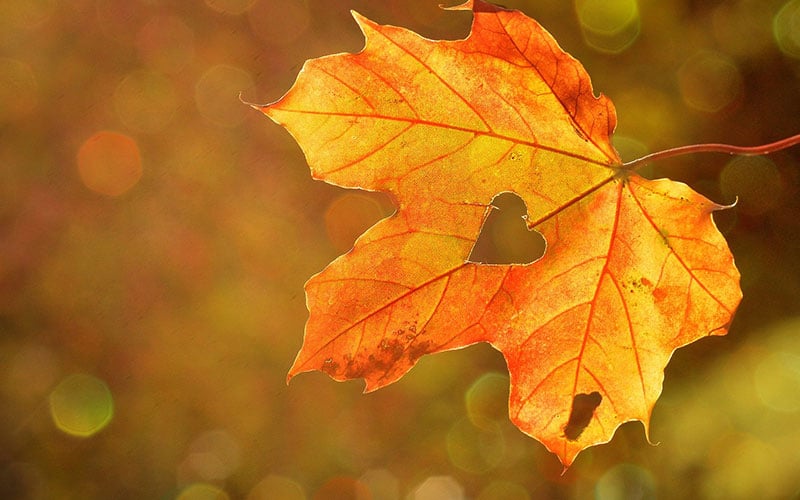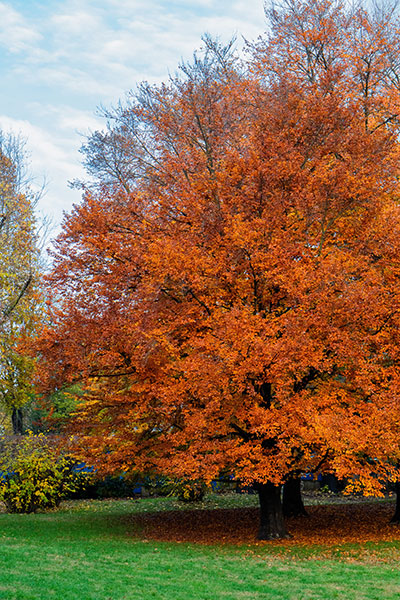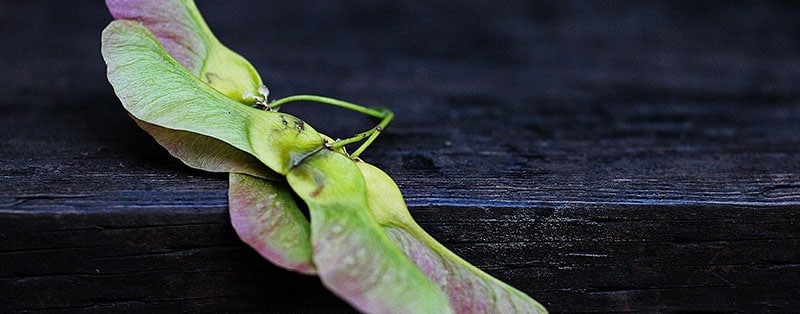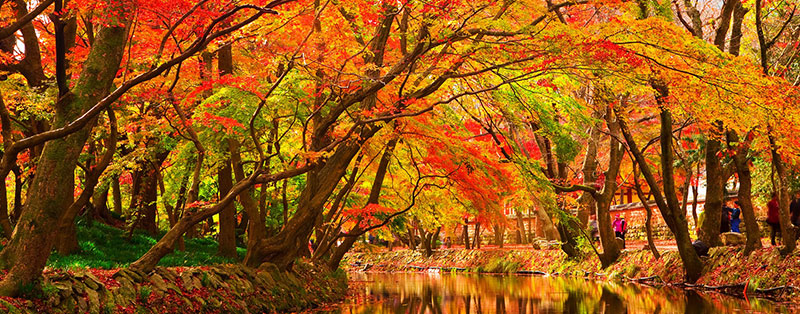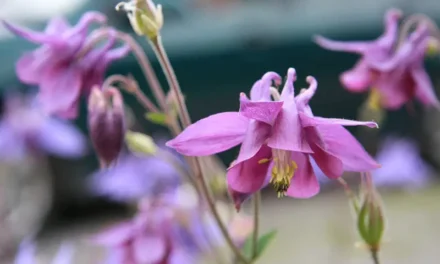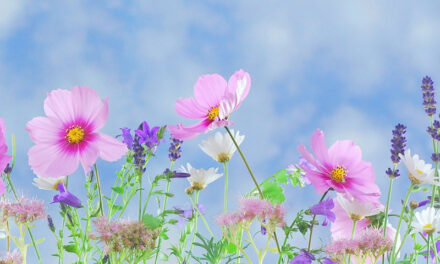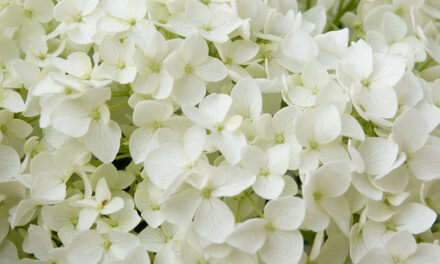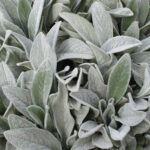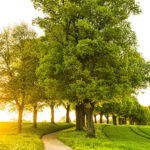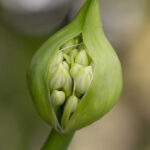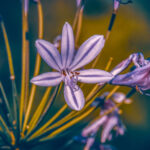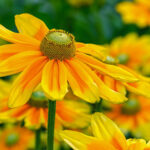Maple is best known for its beautiful leaf colors. Especially the varieties from Japan, Korea, and North America are characterized by beautiful autumn colors. In many Botanical and private gardens, you will encounter the maple for its decorative value. There are also aceretums, maple gardens, to visit. Here you will find a collection of many different Maples.
A fun fact about the maple: You probably know the fruits of the maple, those funny little propellers that come down from the trees like a helicopter. These propellers are natural toys for children, they throw the “samara” in the air, again and again, to see this special effect again.
Maple tree
The Maple is a tree and a shrub. There are about 120 types of Maples. The maple tree is found in the temperate regions of the Northern Hemisphere.
The Maple is a fast-growing tree and can reach an average height of 8 to 12 meters in good conditions. Of course, there are exceptions in height, there are maple trees that can grow much higher and shrubs that remain lower.
The largest maple species can grow to a height of 20 to 30 meters. Low Shrub varieties can stay 70 to 80 centimeters. The maple tree forms a deep root system on good soil. In fact, it grows on any good soil, as long as it is not too wet and preferably rich in nutrients. Japanese maples in particular like a spot in partial shade and moist, acidic soil.
If you want to know what the soil type is in your garden, read the article What type of soil do I have in my garden?.
What does a maple tree look like?
The maple can be recognized by the shape of the leaf. Some varieties have beautiful colors, especially in the fall. In addition, a striking feature is the fruits, which have a divided seed part and two opposite wings.
The bark is also a characteristic by which you could recognize the maple. The tree has a thin bark that is gray in color and smooth. As the tree gets older, the bark will crack and peel off. The wood is very valuable and is used to make furniture and musical instruments.
Maple leafs
The Maple can be recognized by the maple leaf, a five-lobed, hand-shaped leaf. The fresh green hand-shaped leaves grow on the tree in the spring.
The maple is not evergreen in winter. Different varieties have great ornamental value due to the autumn coloring of the leaves. The maple leaf can also be three or seven-lobed. The leaves are directly opposite each other on the branch and crosswise on the branches. The leaf has a serrated edge and a red leafstalk. On the underside of the leaf, you will find small hairs in the armpits of the nerf.
Maple tree seeds
The Maple is a tree with helicopter seeds. Maple tree seeds can travel long distances through the air due to their wings. This means that there is a chance they will land in places where you would not expect them. The seeds start to germinate after a few weeks at a good temperature and sufficient moisture. Seeds of the Maple have elongated, triangular/ovate leaves. They are slightly frost-sensitive. The tree-to-be likes moist, reasonably nutrient-rich, and airy soil. They cannot stand flooding.
If you want to get rid of your Maple tree seedlings: make sure you remove them as soon as possible, after two years it is a lot more difficult to remove them. And remove them root and all. To prevent the seedlings, you will have to remove the fruits from your garden, for example with a leaf vacuum cleaner, a broom, or by hand.
The fruit of the Maple
The fruit of the Maple is a winged nut. This winged nut is called a Samara. This nut is also popularly known as the helicopter. When they fall from the tree or you throw them into the air, the wings spin, just like the propeller of a helicopter. The Samara consists of two split fruits on a stalk, which are opposite each other. In September and October, the fruits form on the branches.
Is the maple tree poisonous?
The winged fruit, the samara, is poisonous to horses. Just like the seedling and the leaves of the maple. The substance hypoglycin A, which is present in the common maple (Acer Pseudoplatanus) and the field maple (Acer Negundo) is very toxic to horses. The poison in the seeds, seedlings, and leaves can cause a serious life-threatening muscle disease for them. The muscles of the horse can be affected in such a way that the horse can no longer move. A horse can die from this within a few days.
Maple flower
The sycamore maple, Acer Pseudoplatanus, has an inconspicuous inflorescence. The flower appears after the tree has produced its leaves in the spring. The inflorescence is formed by hanging clusters of light green flowers. They consist of five small flowers in the cluster. Bees and other insects will flock to the nectar in the flowers in early spring.
Maple syrup
Syrup is made from the sugar maple, the so-called maple syrup. It is a sugary syrup that is drawn from the stem. This maple syrup is an important source of income, especially in Canada. That’s one of the reasons the national symbol of Canada is the maple leaf. The leaf can be seen on the national flag of Canada. The maple syrup is a sweetener with a caramel flavor. The sap you get directly from the tree does not taste all that sweet. To sweeten the maple syrup, some of the moisture is removed from the maple sap, this makes it more concentrated and therefore sweeter.
When to prune maple trees?
In principle, maple trees don’t need to be pruned. If you still find it necessary for decorative reasons, prune the maple in the summer. Due to the early sap flow in the tree, you should never prune the maple tree during spring.
The Maple tree belongs to the bleeding tree species. Pruning these species in the spring will cause the tree to “bleed”. This is because the tree produces juice from the beginning of winter. The pressure from this sap builds up so that at the beginning of spring there are enough nutrients for the entire tree.
A good time to prune a maple tree is when all the leaves are on the tree. From the beginning of July, the tree has had time to recover from the energy it took to supply all the new leaves with nutrients. So you can prune your maple from the beginning of July until about mid-September.
If you want to prune, make sure to prune away the dead branches and make sure the tree remains in balance. So take a good look at your tree from a distance. If you remove a heavy thick branch somewhere, do this also on the opposite side, if there is also a thick branch there. Because you are pruning in the period when the tree is full of leaves, the branches that you want to prune are heavily loaded with leaves. Keep this in mind when pruning. For example, saw a branch into parts, this way you prevent the branch from breaking off when pruning.
Some more tips on How to prune a maple tree
- Avoid a double top: prune away a second top, this will cause one branch to grow upwards.
- Don’t prune too much, make sure you prune a maximum of 20%, so you will have a healthy tree
- Cut the branches in time to avoid having to remove thick branches
- And prune in the right period: July to mid-September
Maple tree diseases
In general, a maple can withstand pests and diseases quite well. The most important thing is that the tree is in the right place and gets enough moisture and nutrients from the soil.
A maple tree prefers to stand on nutritious (slightly acidic) soil. Look for each type of maple which soil it prefers. The Japanese maple, for example, prefers slightly more acidic soil and a semi-shaded place. Here is a list of several diseases that can occur in the maple:
Maple bark disease
Maple tree bark disease is a fungal disease that can kill maples. You will notice brown-black spots on the bark. The fungus penetrates the tree, weakening the tree and eventually causing it to die. Inhaling the spores of this fungus is not healthy for humans, it can make you short of breath and cause you to cough.
Unfortunately, there is no pesticide to prevent the disease from spreading. We advise you to remove the tree as soon as possible. It’s wise to consult a specialist before you take down the tree yourself.
Maple tar spot disease
The black spots on the leaf are caused by fallen leaves. During springtime, sticky remnants of fallen leaves appear on the new leaves. These sticky spores form watery spots that later grow bigger and turn from yellow to brown to black.
It is a cosmetic disease that does not harm the tree. You can prevent it by good growing conditions and by removing the fallen leaves in time.
Verticillium wilt
Verticillium wilt makes the leaves and branches start to wither. The cause comes from within the plant. There is a fungus in the soil that clogs the plant and the vascular bundles via the roots.
You must provide airy soil. This fungus cannot survive in airy soil. This can occur with too much watering or over-fertilization. The solution is to stop applying fertilizer and water and make the soil airy.
Fungus on Maple Tree
The fungus caused by the red lead mushroom is characterized by orange-red to salmon-colored warts on the bark. This mainly occurs on the deadwood. You can prevent it by ensuring that the tree is kept in good condition. Remove the fungus by pruning and cleaning up the affected areas.
White rot
This is a disease that you sometimes don’t see on the outside of the tree. The fungi that cause this gain access to the tree or shrub through injuries. This is what makes it so dangerous. A tree that is damaged inside can break off just like that if there is not enough healthy trunk left to keep it standing.
Types of Maples trees
The maple is characterized by its five-lobed leaves. Besides this, there are also many differences in the types of maple trees. There are maples that can reach heights of 25 meters and shrubs that only reach 60 cm.
Curious? Check our article The 28 most beautiful types of maple trees.

